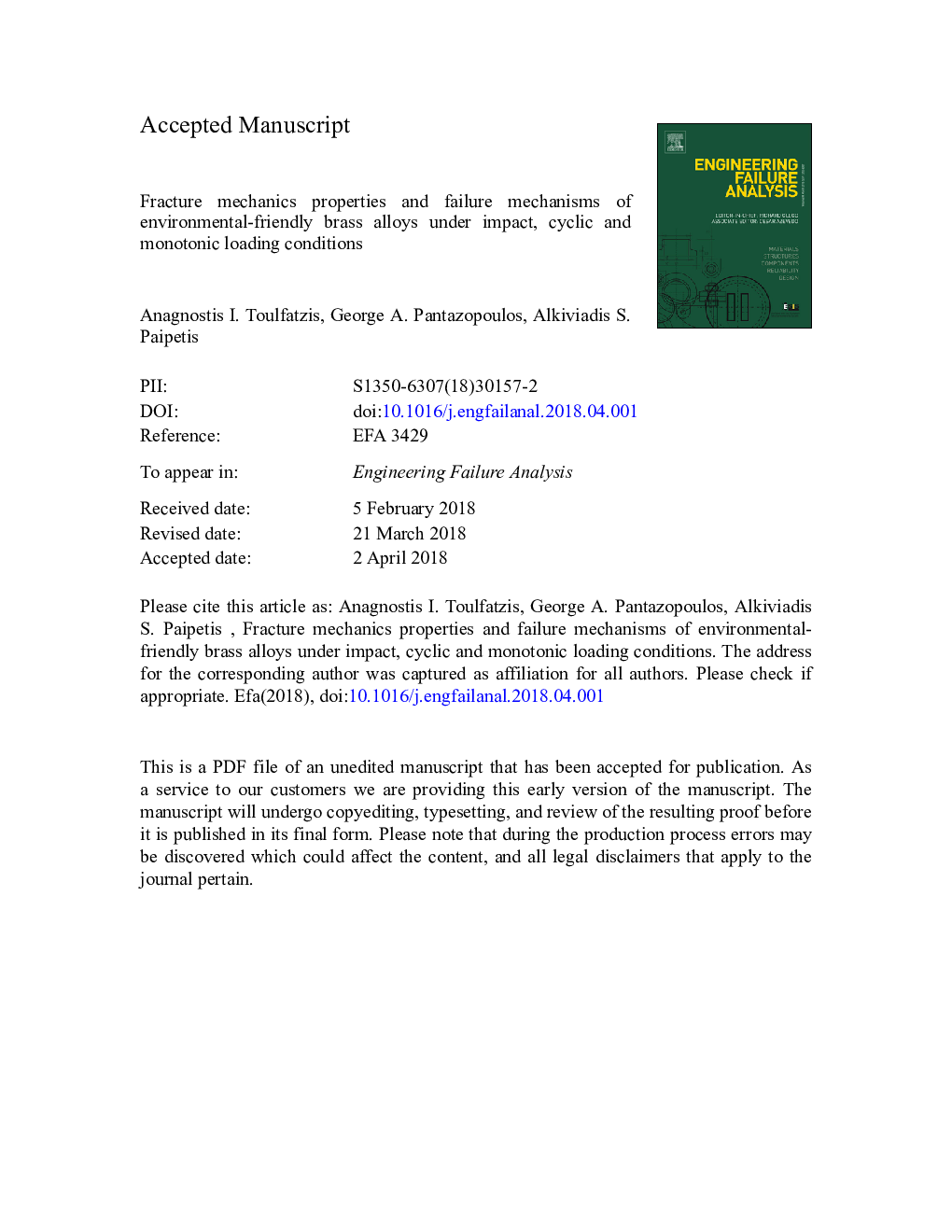| Article ID | Journal | Published Year | Pages | File Type |
|---|---|---|---|---|
| 7167400 | Engineering Failure Analysis | 2018 | 48 Pages |
Abstract
Final heat treatment was applied for the microstructural modification and machinability improvement of Pb-free brass alloys, namely CW510L and CW511L. In the frame of the assessment of the structural integrity of such components in terms of fracture toughness and damage tolerance, the crack-resistance was studied employing fracture mechanics testing techniques, such as impact toughness (Charpy) and Crack-Tip-Opening-Displacement (CTOD) according to ISO 148-1 and BS 7448-1 standards respectively. The heat treated CW510L at 775â¯Â°C for 60â¯min exhibited an improvement of fracture toughness in terms of impact energy (from 47â¯J to 52â¯J) and critical CTOD (from 0.32â¯mm to 0.50â¯mm), while in case of CW511L heat treatment performed at 850â¯Â°C for 120â¯min caused a slight deterioration of fracture toughness in terms of impact energy (from 104â¯J to 84â¯J) and critical CTOD (from 0.71â¯mm to 0.54â¯mm). Moreover, fractographic analysis was comprehensively performed at the various transition fracture zones and the emergent failure mechanisms were identified and documented for both examined brass manufacturing conditions (“as received” and after “final heat treatment”). The compilation of fracture mechanics properties and the acquired fractographic information have resulted evidently in the formulation of salient interpretation and postulation of hypotheses concerning the influence of the dominant microstructure and loading regimes on crack propagation and the observed failure mechanisms.
Related Topics
Physical Sciences and Engineering
Engineering
Industrial and Manufacturing Engineering
Authors
Anagnostis I. Toulfatzis, George A. Pantazopoulos, Alkiviadis S. Paipetis,
